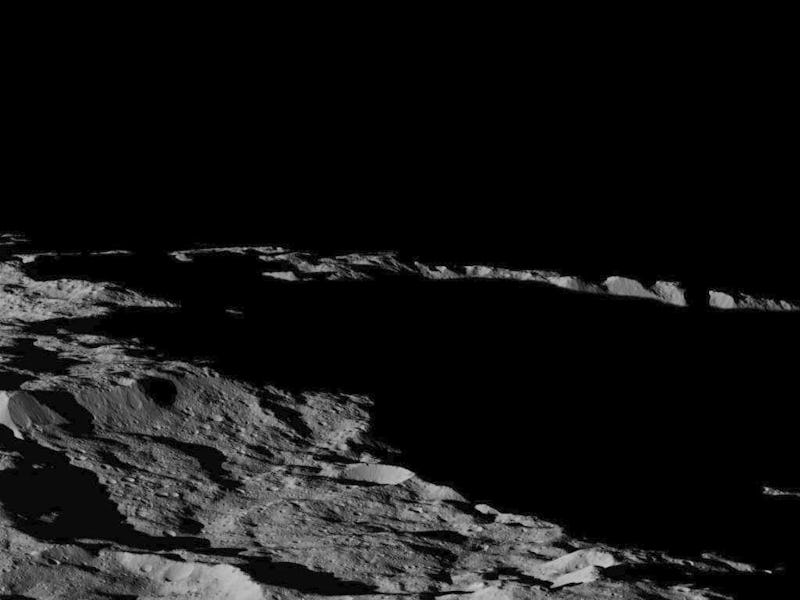NASA’s Dawn Shows Craters and Surface Details of Ceres
The spacecraft, in orbit around the dwarf planet, is taking photos at its closest vantage to date.

NASA’s Dawn spacecraft has conveyed new views of the dwarf planet Ceres, revealing sharp details of the object’s fissured surface.
An image of a crater chain called Gerber Catena on the surface of the dwarf planet Ceres, taken by NASA's Dawn spacecraft.
Taking a vantage point in Ceres’ southern hemisphere (on December 10), Dawn—an ion-propelled exploratory craft—snapped photos from an approximate orbit altitude of 240 miles, its lowest-ever orbital distance to date, and where it will remain indefinitely.
An image of the surface of the dwarf planet Ceres, taken by NASA's Dawn spacecraft at a low-altitude orbit of 240 miles.
The Dawn mission, managed by the Jet Propulsion Laboratory for NASA’s Science Mission Directorate in Washington, is the first to explore a dwarf planet, as well as the first to orbit two solar system objects outside the Earth-moon system. Dawn had previously visited the protoplanet Vesta for 14 months in 2011-2012, before arriving at Ceres—located in the asteroid belt between Mars and Jupiter, as is Vesta—in March of 2015.